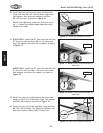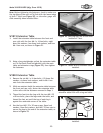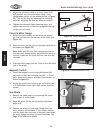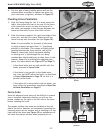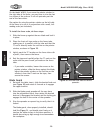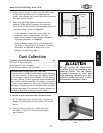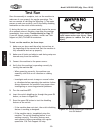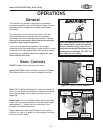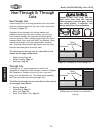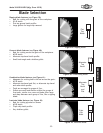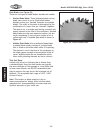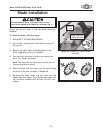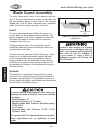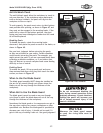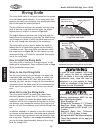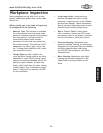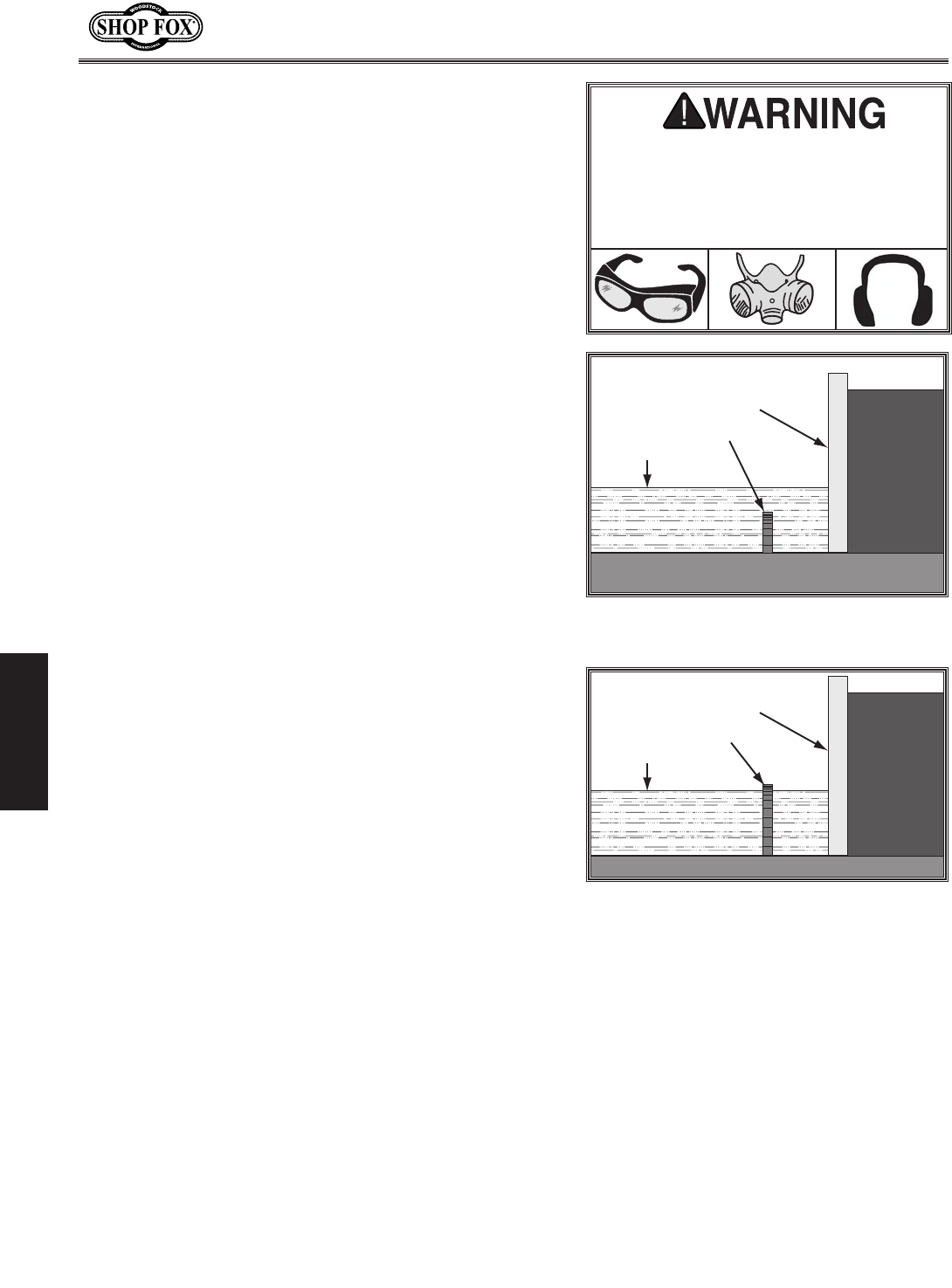
-32-
Df[\cN(/(0&N(/)'D]^%J`eZ\('&('
FG<I8K@FEJ
Efe$K_ifl^_K_ifl^_
:lkj
Efe$K_ifl^_:lkj
A non-through cut is a sawing operation where the blade
does not protrude above the top face of the wood stock,
as shown in =`^li\*..
Examples of non-through cuts include dadoes and
rabbets. Non-through cuts have a higher risk of injury
from kickback because the spreader and blade guard
must be removed. When making non-through cuts with a
standard blade, the riving knife MUST be installed. When
making non-through cuts with a dado blade, extreme
care, including using multiple light passes must be used,
because the blade guard cannot be used.
K_\]fccfn`e^efe$k_ifl^_ZlkjXi\[\jZi`Y\[`ek_`j
dXelXcfek_\gX^\jefk\[Y\cfn1
Dado Cutting:GX^\++
Rabbet Cutting:GX^\+.
Resawing: GX^\+0
=`^li\*/% Example of a through cut
(blade guard not shown for illustrative
clarity).
=\eZ\
JXn9cX[\
Nfibg`\Z\
=\eZ\
JXn9cX[\
Nfibg`\Z\
=`^li\*.. Example of a non-through cut.
K_ifl^_:lkj
A through cut is a sawing operation in which the
workpiece is completely sawn through, as shown in =`^li\
*/. Examples of through cuts are rip cuts, cross cuts,
miter cuts, and beveled cuts. The blade guard assembly
MUST be used when performing through cuts.
K_\]fccfn`e^k_ifl^_ZlkjXi\[\jZi`Y\[`ek_`jdXelXc
fek_\gX^\jefk\[Y\cfn1
Ripping:GX^\+'
Crosscutting:GX^\+(
Miter Cuts:GX^\+)
Blade Tilt & Bevel Cuts:GX^\+*
;XdX^\ kf pfli \p\j# cle^j# Xe[ \Xij
Zflc[ i\jlck ]ifd lj`e^ k_`j dXZ_`e\
n`k_flkgifg\igifk\Zk`m\^\Xi% 8cnXpj
n\XijX]\kp^cXjj\j#Xi\jg`iXkfi#Xe[
_\Xi`e^gifk\Zk`fe[li`e^fg\iXk`fe%



